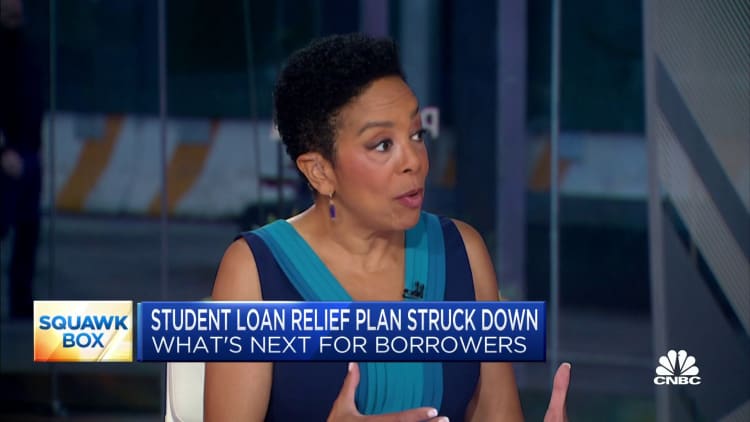By now, most federal student loan borrowers have accepted that, after a three-year break, their payments will restart in October. Some people, however, may actually have more time.
CNBC spoke to several borrowers who say they have statements from their servicer showing their first payment's due date is in November or December.
That's not surprising, said Scott Buchanan, executive director of the Student Loan Servicing Alliance, a trade group for federal student loan servicers.
"Some borrowers may not be due until 2024," Buchanan said.
More from Personal Finance:
The Federal Reserve leaves rates unchanged. Here's how it impacts your money
A 'financial vortex' may reduce retirement savings, Goldman Sachs finds
TikTok interviewers ask 'How much do you make?' What you can learn from the answers
Your last payment may affect your next due date
Borrowers have different due dates, based on various factors about their loans. When a borrower made their last payment before or during the pause can impact when their next due date is, Buchanan said.
Many people made their usual student loan payment in March 2020, before former President Donald Trump first announced the pause on federal student loan bills and interest accrual, he said.
Depending on when their loan servicer received those funds, it may have been considered an extra payment that has now pushed back their due date. Meanwhile, borrowers who made repeated payments during the pause will likely have even more time, Buchanan said.
You can contact your loan servicer or log in to StudentAid.gov to learn your exact due date, said higher education expert Mark Kantrowitz.
Recent graduates, meanwhile, may also get more time if they're still in their grace period, Kantrowitz said. Grace periods usually span six months from graduation.
How to get ready for your student loan payment
Ahead of your due date, you want to make sure you are familiar with your loan servicer (millions of borrowers' accounts had been transferred to a new company during the pandemic) and the payment amount you'll owe. The typical federal student loan bill is $350 a month.
If you were enrolled in the standard 10-year repayment plan before Covid and still are, your monthly payment should not have changed. However, borrowers repaying their loans in an income-driven plan could see a different monthly obligation if their income has increased or decreased since three years ago.
If you are struggling financially, you should acquaint yourself with your options, including deferments and forbearances.

Until October 2024, borrowers will be shielded from the worst consequences of missed payments, the Biden administration recently announced.
For example, loans will not go into default and delinquencies will not be reported to credit reporting agencies, Kantrowitz said.
Late fees won't be charged, either.
But as is the case with a forbearance, interest will continue accruing on your debt while you don't make payments. As a result, Kantrowitz recommends borrowers start repaying their bills if they can.
"Doing otherwise will eventually hurt them," he said.


